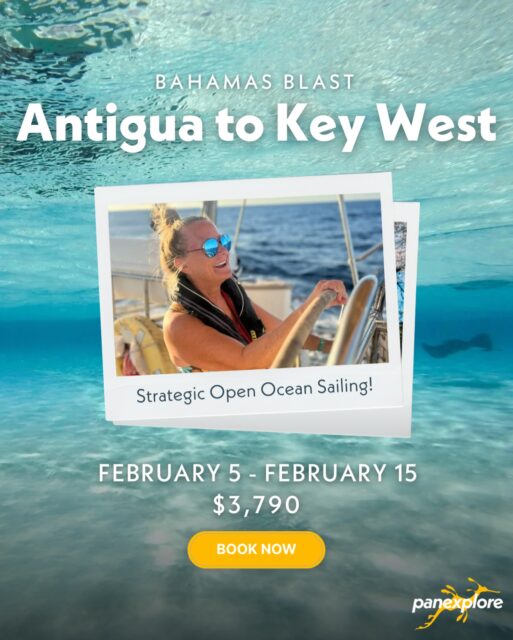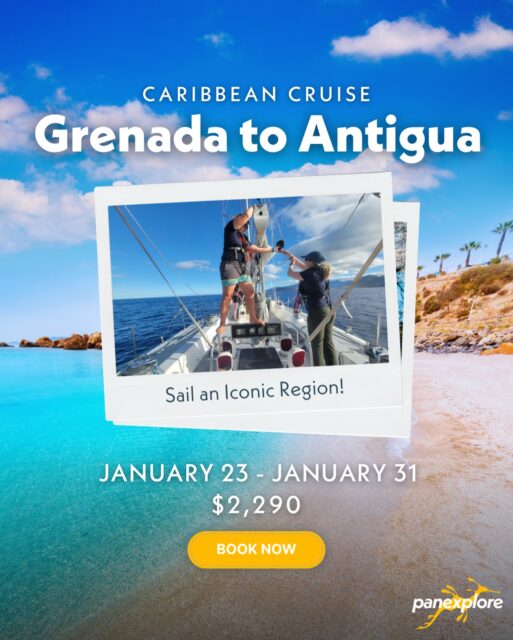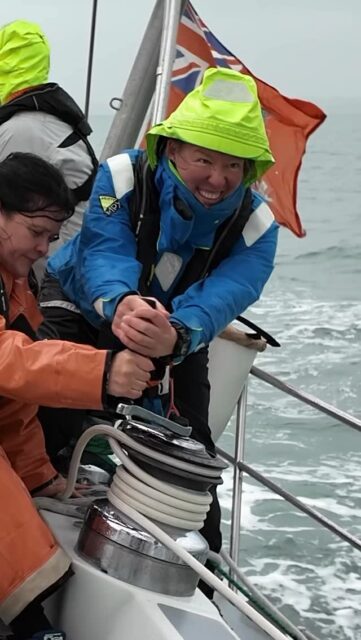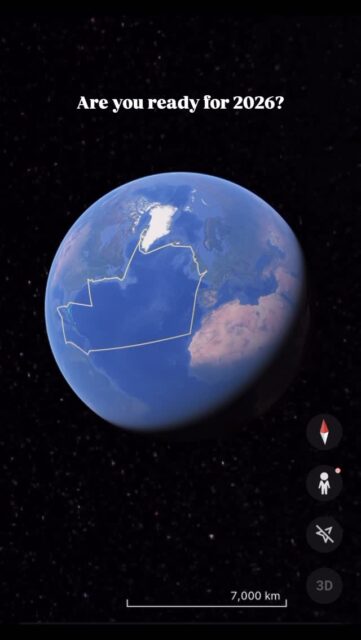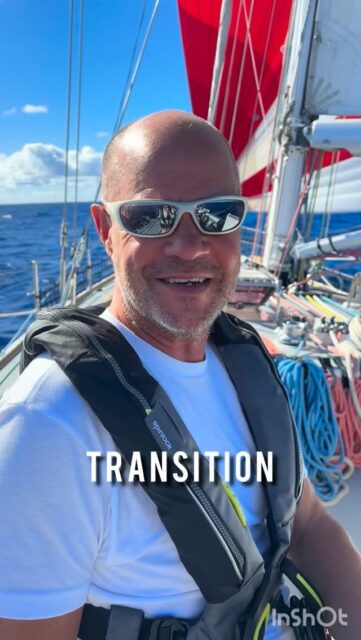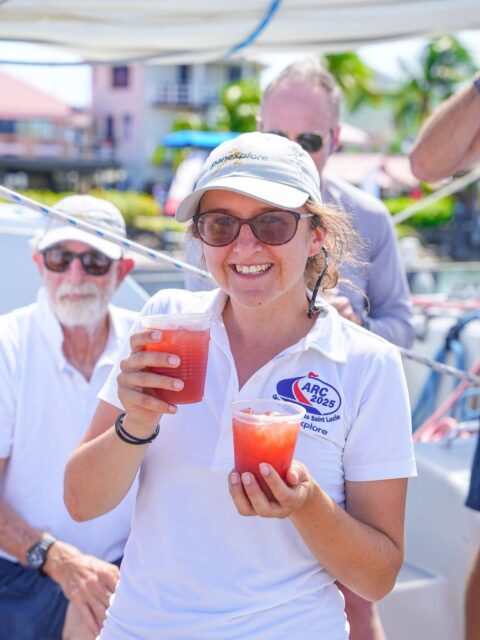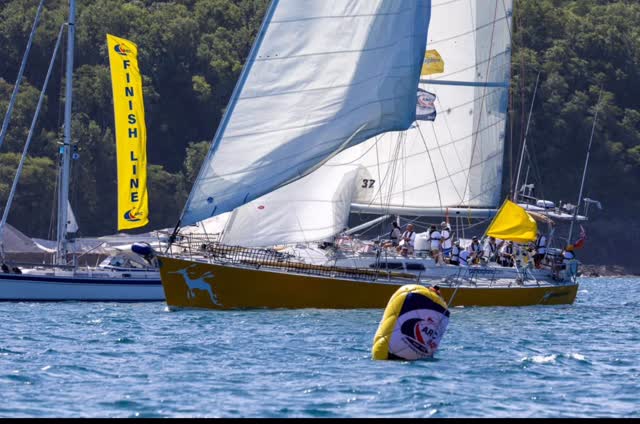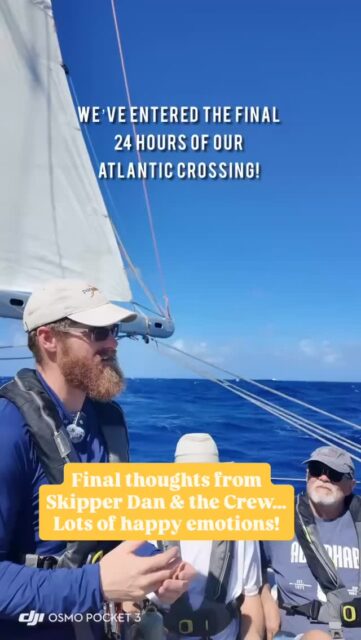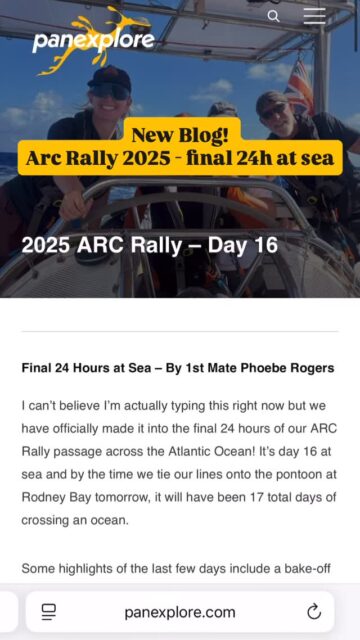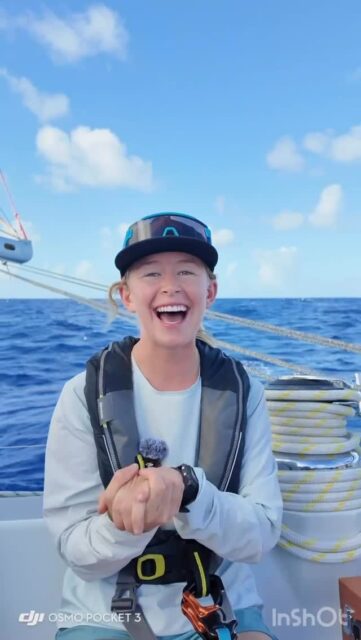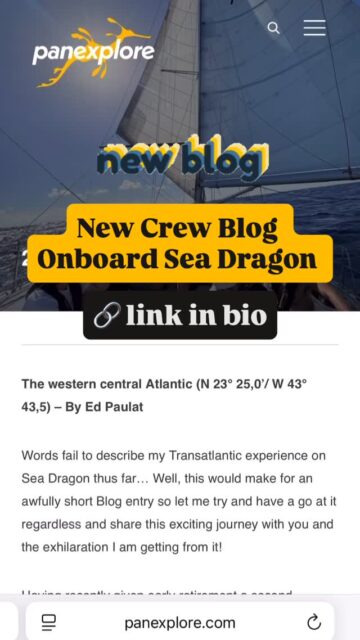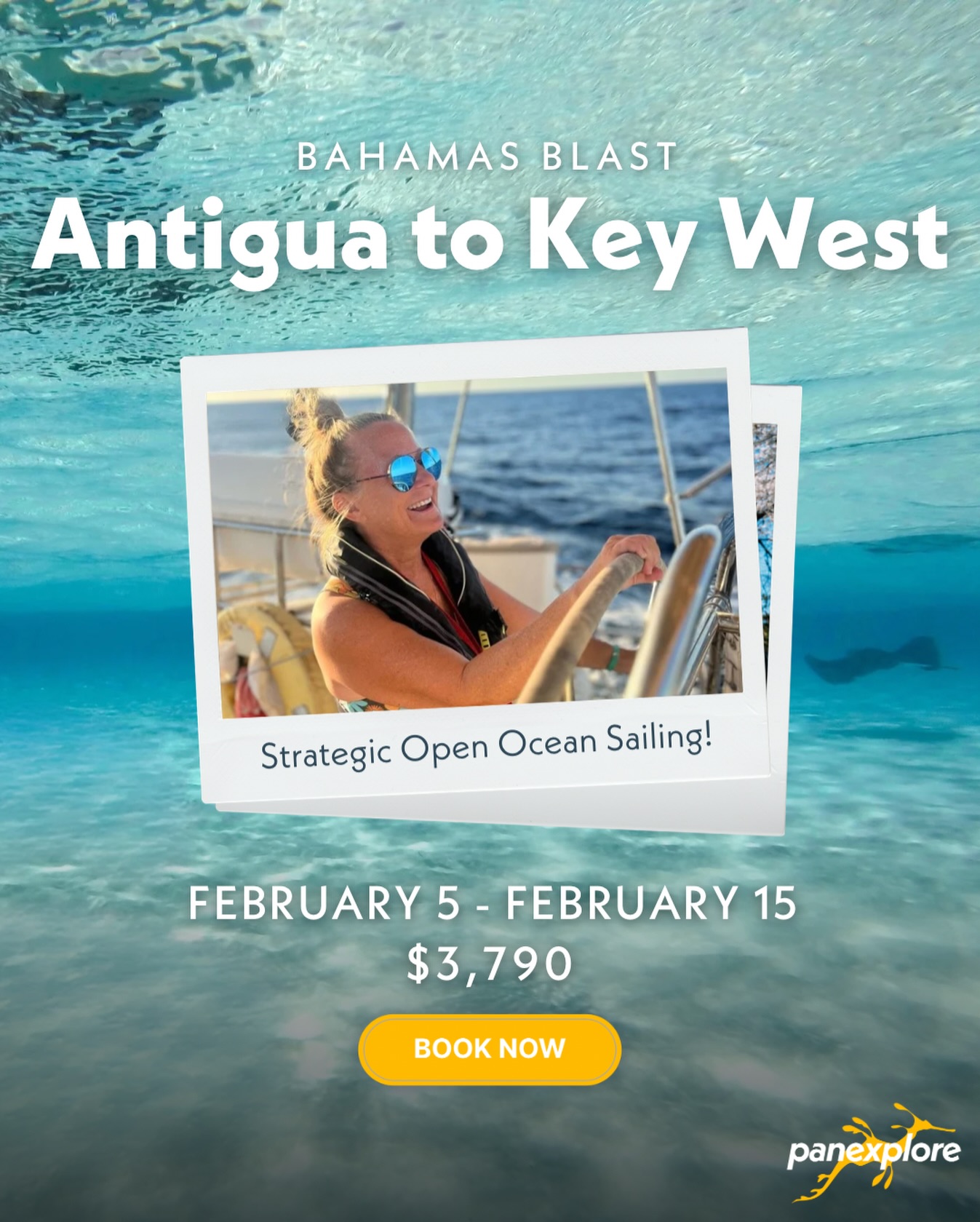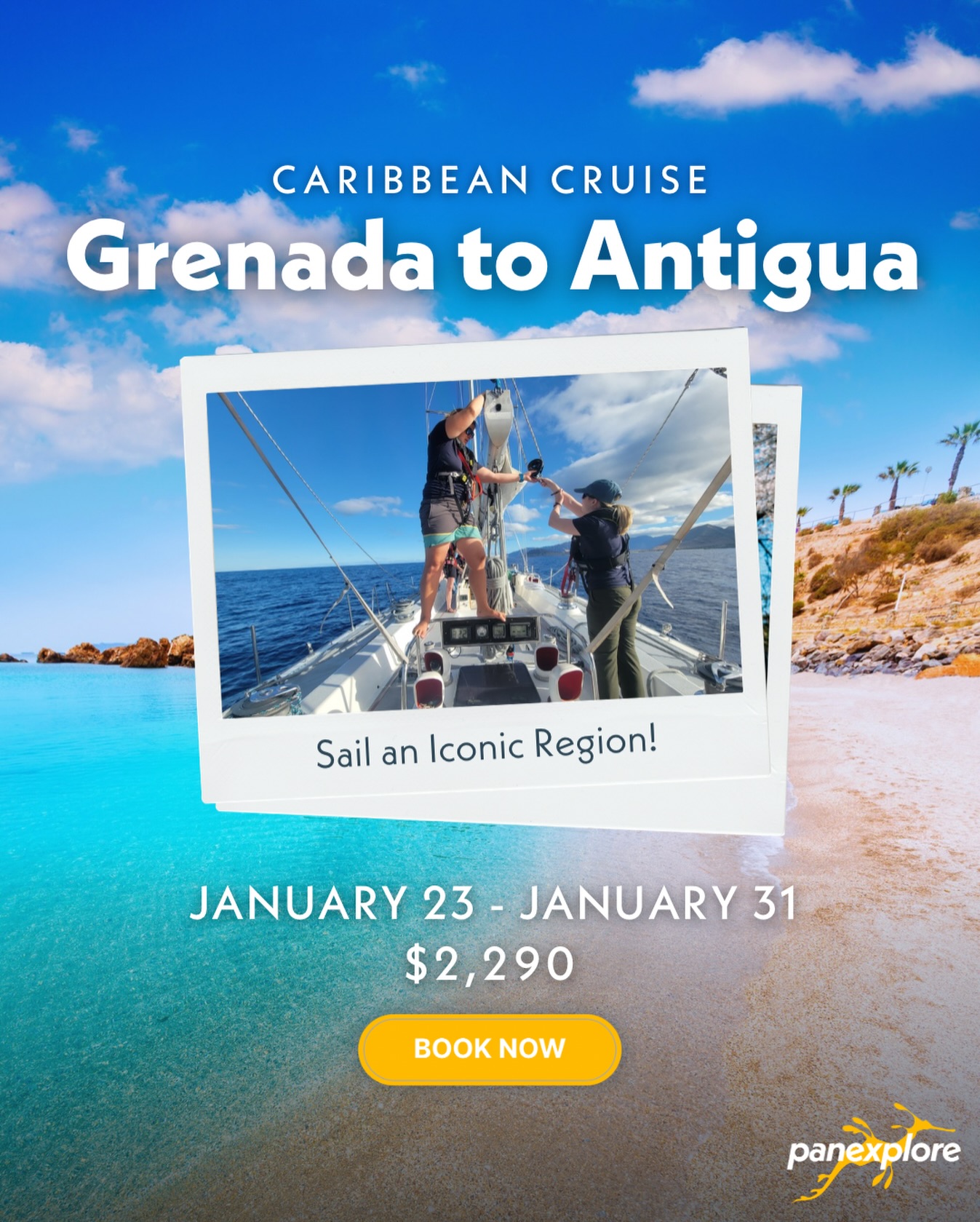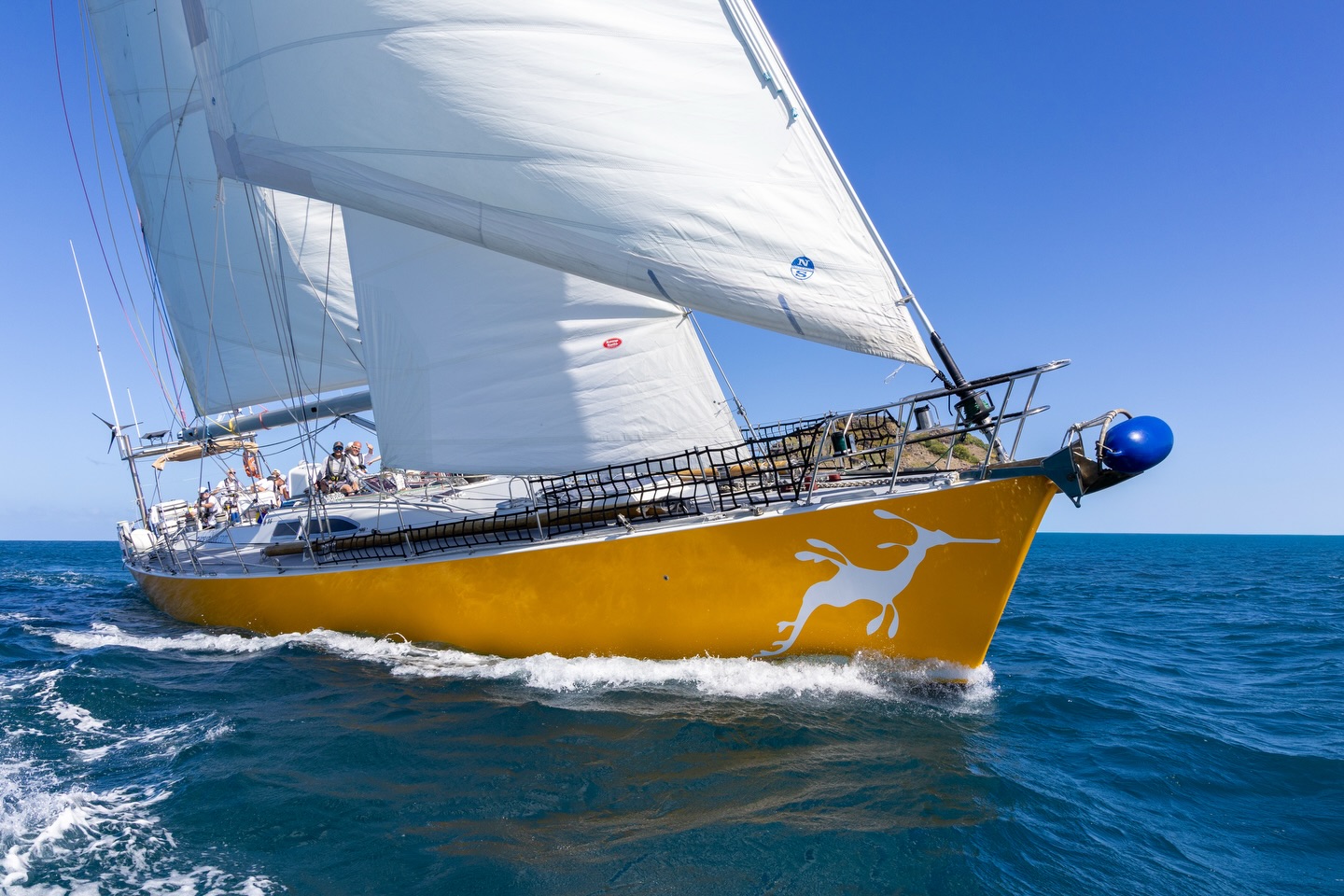After several hours delay clearing immigration, Sea Dragon wayed anchor and wove her way out of the bay of islands that comprises the sound that would serve as our last taste of terra-firma for some thirty days. We wove our way around hazards to land’s end just at dark, setting sail for Capetown, with the crew processing the full spectrum of emotions that befall the terrestrial spirit as she prepares for an epic journey into such a vast and uknown wilderness.
A few surprises lay in our path as we sailed for the open ocean, typical of Brazilian waters- unlight rocks, fishing vessels without lights– whose captain felt it unnecessary to alert us of his presence until just a hundred meters off our starboard bow. On watch on the foredeck I yelled for crew Mary Maxwell, at the helm to veer hard to port, giving the vessel a wide berth as we passed. The swell, compressed by the land masses it filtered through in a process known as focusing, were short in frequency, meaning Sea Dragon 72 feet would be cresting two wave peaks at a time, making for rough conditions.
It’s always a quick sorting out when we get underway, often with inexperienced seafaring crew who don’t yet know if they will succumb to seasickness. From my experience, about 9 out of 10 crew experience some sort of effect, all to varying degrees. I’m one of the lucky ones (knocks on wood). So, as expected those who fell ill would take time adjusting to life at sea. And much vomiting was to be heard on deck today. The fishes were fed.
The crew despite their illnesses, are all top notch and I’m inspired by each of their life stories. As always, The 5 Gyres Institute looks for different accolades in our crew, from science, to art to education. It’s our firm belief as an organization that the science of plastic pollution can no longer remain just in academia, and thus we need filmmakers, artists, activists, pro surfers, educators and world sailors to share in our mission to change the world’s addiction to single use plastic. We need to reach millions, not thousands.
On deck is like a salon for learning multiple disciplines by folks who are experts in their fields. It’s our hope that the exposure to science that works as the foundation for our expeditions will be shared and disseminated to many people, through art, music, sailing/surfing culture, film, the written word and education. It’s why we do what we do in the way we do it. And as always, I’m honored to be a part of the team.
Leaving, I found myself whole again; personally, I long for the sea when I’m away from her. I like the work of sailing and the challenges of ordinary chores at sea. I love the beauty. Yes, on these voyages we’ll come across tremendous horrors, being confronted with the stain of our culture, but we’re reminded of what we wish to protect in every sunset, in every moonrise and every new appearance of a celestial body in the gloaming.
Right now, we’ve gained about 170 nautical miles to our Southeast, heading for one of the smaller accumulation zones that has never been studied by anyone before. We need to get 200 miles off the coast of Brazil before any science can be conducted and right now, we’re traveling about 8-9 knots, mainsail with a reef and forward staysail (smaller amounts of sail due to steady 20-23 knot winds). The seas are still a bit rough, but the wave period should increase a bit, and we’ll swing eastward and the wind should swing a bit more to the north making life aboard a bit more comfortable for all.
At dawn we’ll begin sampling the ocean for plastic as well as persistent organic pollutants, sampling plastic about every 50 nautical miles until Capetown. Right now, this crew member needs to get a bit of sleep before my night watch and my first full survey of the constellations of the southern hemisphere.
